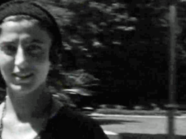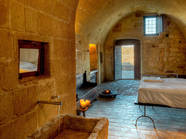Saint Lucy's Day is a Christian feast day celebrated on December 13, commemorating Santa Lucia, a 3rd-century martyr. The feast is a Catholic celebrated holiday with roots that can be traced back to Sicily. Of course this is a different year and the pandemic has canceled all initiatives, but we want to remember them so that we are all ready to celebrate next year.
You chose: religion
-
-
The Mormons who first came to Italy from the US in 1850 could never have dreamed that their evangelical heirs would build a huge new temple in Rome itself, with a visitors center and a family history center. Temple inauguration is this March.
-
Saint Lucy's Day is a Christian feast day celebrated on December 13, commemorating Santa Lucia, a 3rd-century martyr. The feast is a Catholic celebrated holiday with roots that can be traced back to Sicily.
-
March 19th marks a significant day for both Catholics and non-Catholic in New Orleans. It is the feast of St. Joseph–a patron saint of Sicily who helped provide relief to the Sicilian people during a famine. NOLA residents certainly do not miss out on their chance to celebrate the saint.
-
Learning something new about the historical devotion to the Madonna Nera del Tindari in Manhattan’s East Village.
-
Looking (again) at a little known Italian-American folk art.
-
Have you been in Mulberry Street during these days of celebrations in honor of Saint Gennaro? Do you know why the neighborhood venerates the saint since 1926? Have you ever heard about the “Miracle of Saint Gennaro”, taking place in Naples on Sept 19 since more than 600 years? If your answers are “no” you might first want to read this post and then take a walk down there
-
Divinamente New York is a festival that will take place in the Big Apple from April 22 to April 26. Faith-inspired performances and discussion will contribute to this thriving seriees of cultural events.
-
Facts & StoriesOn March 26th, the front page of The New York Times online edition presented the case of the "Our Lady Of Loreto" church in Brooklyn. Residents have long been fighting the decision of the Diocese to demolish this historical monument, built by Italian immigrants in the early 1900s, in order to build in its place low income housing. We had published a story in January 2009, suggesting that the NYT look into it more closely. Our article, written by Joey Skee, reviewed the issue giving plenty of historical and cultural detail; it also hinted that the weakness of the local residents' protest could be explained not only in ethnic-political terms (that is, as a sign of weakness of the Italian American community) but also as the consequence of low rates of church attendance by the local Catholics – the majority of whom now are Latinos, Haitian Americans, and others. Over the years, this led to the site’s increasing disuse, which "transformed it into a dead place, a spent memorial to an Italian-American past." Now that the Italian-American and African-American communities are joining forces in their protest to convert the church into a much needed neighborhood cultural center, we believe that is incumbent on all of us to gather our resources. In so doing, we have decided to re-publish our previous article together with a Facebook message from Senator Diane Savino urging everybody to join the battle.
-
Two religious buildings historically associated with Italian-American Catholics face challenges to survive.







































